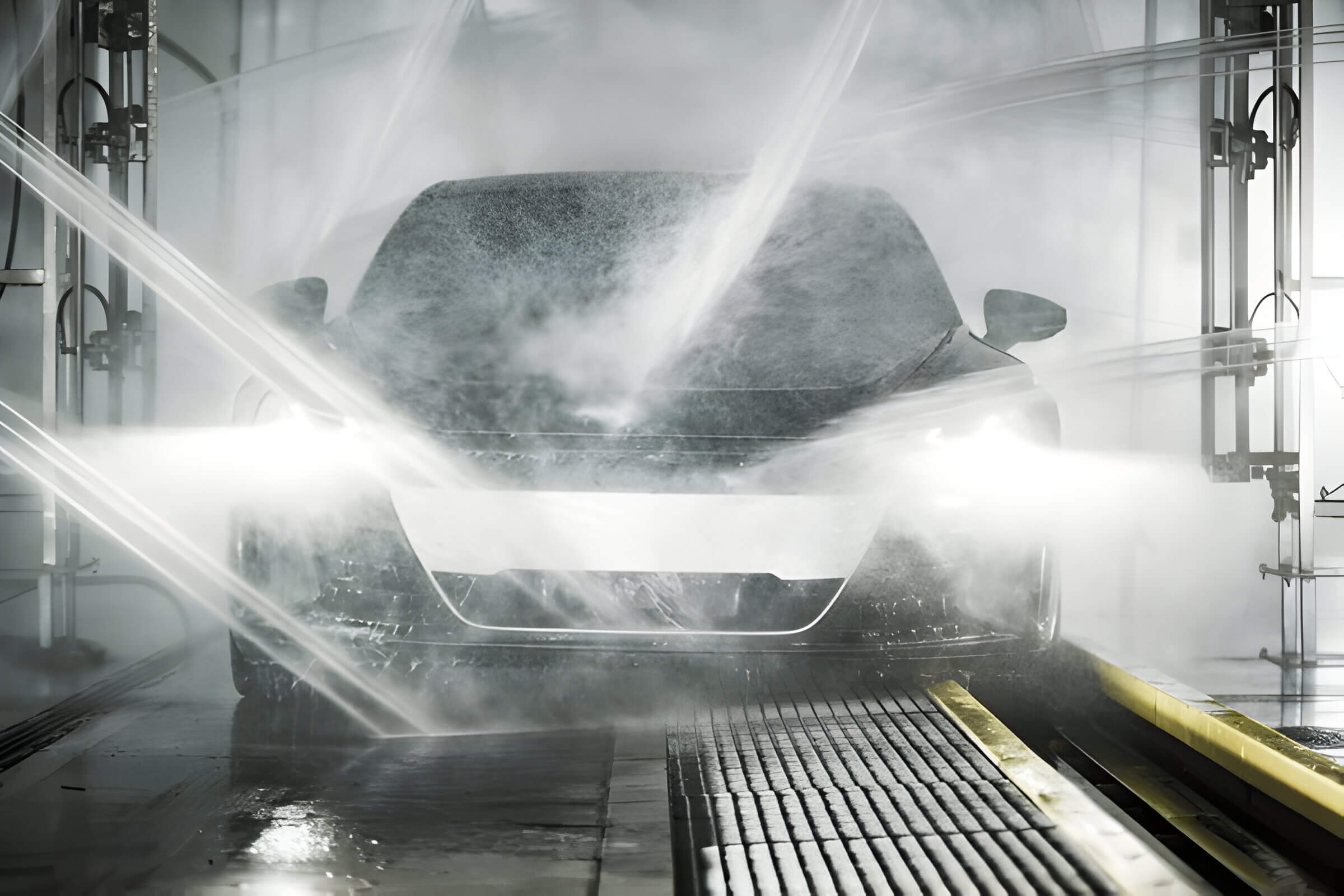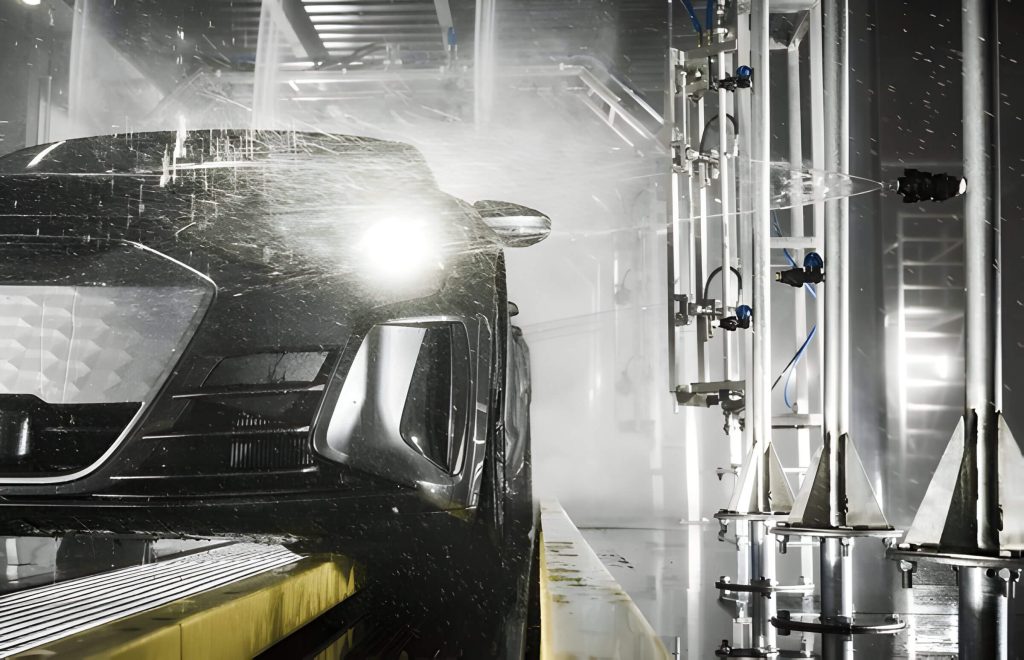
Touchless car washes are a popular, efficient choice for vehicle owners. These systems use high-pressure water jets and specialized cleaning agents instead of traditional brushes, reducing the risk of scratching paint. However, it’s crucial to understand their operation and potential risks. This guide covers how touchless car washes work, their pros and cons, and tips for protecting your car’s paint to help you decide if this method is right for you.
How Do Touchless Car Washes Work?
Touchless car washes represent a significant advancement in automatic car cleaning technology, offering an efficient and gentle way to clean vehicles without physical contact. The touch-free car wash process begins with the application of specialized detergents designed to break down dirt, grime, and road debris. These powerful cleaning agents are sprayed onto the vehicle using high-pressure nozzles, ensuring thorough coverage.
Next, high-pressure water jets are employed to rinse away the loosened contaminants. This no-touch car wash method eliminates the risk of scratches or swirl marks that can occur with traditional brushes or cloths. The entire process is carefully timed and controlled by sophisticated systems that adjust pressure and detergent levels based on the vehicle’s size and level of soiling.
Finally, a drying phase typically follows, where powerful air dryers remove excess water from the vehicle’s surface. Some touchless washing technologies also include additional steps such as applying protective waxes or sealants to enhance shine and provide an extra layer of protection against environmental elements.
Overall, touchless car washes offer a convenient and safe alternative for maintaining a clean vehicle without compromising its exterior finish.
The Potential Risks of Using a Touchless Car Wash on Your Paint

When it comes to maintaining the pristine appearance of your vehicle, understanding the potential risks associated with touchless car washes is crucial. Although these automated systems are designed to clean your car without any physical contact, there are several concerns regarding car paint safety that you should be aware of.
One of the primary risks of touch-free washing is the use of high-pressure water jets and strong chemical detergents. While these methods are effective at removing dirt and grime, they can also be harsh on your vehicle’s paint. Over time, repeated exposure to such intense cleaning agents may lead to paint damage concerns, including fading or weakening of the clear coat that protects your car’s finish.
Another issue to consider is that touchless car washes might not always provide a thorough clean. Since there is no physical contact involved, stubborn contaminants like bird droppings or tree sap may not be completely removed. This can leave residues on your paintwork that could potentially cause long-term damage if not addressed promptly.
While touchless car washes offer a convenient and seemingly gentle way to clean your vehicle, it’s important to weigh these benefits against potential risks to your car’s paint. Regularly inspecting your vehicle for signs of wear and opting for gentler cleaning methods when necessary can help maintain its appearance and protect its value over time.
The Advantages of Using a Touchless Car Wash for Your Vehicle
Touchless car washes have become increasingly popular due to their numerous benefits over traditional washing methods. One of the primary advantages of no-touch washing is its ability to provide a safe car cleaning experience without the risk of surface damage. Traditional car washes often involve brushes and cloths that can create micro-scratches on your vehicle’s paintwork, whereas touchless systems use high-pressure water jets and specialized detergents to clean effectively without physical contact.
Another significant benefit is the protective measures for paintwork that touchless car washes offer. By eliminating abrasive brushes, these systems help maintain the integrity of your vehicle’s finish, extending the lifespan of its exterior appearance. This method also ensures that hard-to-reach areas are thoroughly cleaned, as high-pressure sprays can penetrate crevices and corners more effectively than manual scrubbing.
Furthermore, touchless car washes are generally quicker and more efficient than traditional methods. Automated systems streamline the cleaning process, allowing you to get back on the road faster while still ensuring a comprehensive clean. Additionally, many touchless wash facilities use environmentally friendly soaps and water recycling systems, making them a more sustainable choice.
Choosing a touchless car wash provides multiple advantages over conventional washing techniques. From safeguarding your vehicle’s paintwork to offering efficient and eco-friendly cleaning solutions, it’s clear why many drivers prefer this modern approach for maintaining their cars’ pristine condition.
The Verdict- Are Touchless Car Washes Truly Safe for Your Paint?
When it comes to maintaining the pristine condition of your vehicle’s paint, the choice of car wash method is crucial. One popular option that often comes under scrutiny is the touchless car wash. But are these no-touch methods truly safe for your paint? Let’s delve into a comprehensive safety evaluation of touch-free washes.
Experts in automotive care have mixed opinions on the safety of touchless washing. On one hand, proponents argue that because there are no brushes or cloths making contact with the vehicle’s surface, there is a reduced risk of scratches and swirls. This can be particularly advantageous for those with darker paint colors, which tend to show imperfections more readily.
However, some experts caution that touchless car washes rely heavily on high-pressure water jets and strong chemical detergents to remove dirt and grime. While this approach minimizes physical contact with the paint, it can potentially lead to other issues. High-pressure water jets might force contaminants deeper into cracks and crevices, while harsh chemicals could degrade wax or sealant layers over time.
In conclusion, while touchless car washes offer a convenient and seemingly safer alternative to traditional methods involving brushes or sponges, they are not without their own set of risks. For optimal paint protection, it may be beneficial to alternate between different washing methods and ensure regular application of protective coatings like wax or sealant. By staying informed about expert opinions on touchless washing safety and carefully considering your vehicle’s specific needs, you can make an educated decision that balances convenience with long-term care for your car’s exterior finish.



